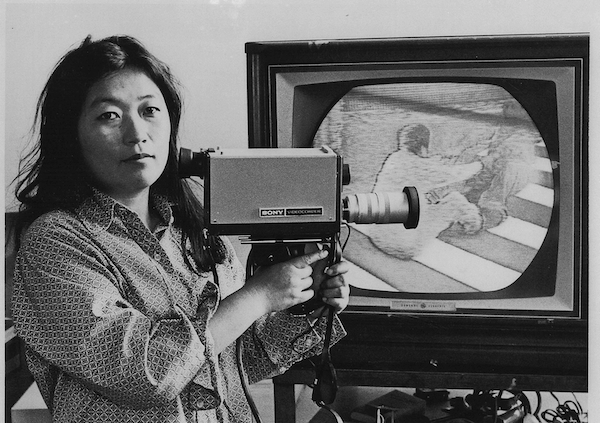Shigeko Kubota gallery opens in Beacon
In a career that attracted interest from prestigious institutions around the globe during her lifetime, Shigeko Kubota peered into the future. As one of the first video-oriented artists in the 1960s, she understood society’s obsession with moving images.
TikTok is the popular distillation of her vision, but even the Metropolitan Museum of Art is preserving and legitimizing “time-based media,” which includes film, video, audio and software.
“She democratized the museum experience and was one of the first artists to go beyond figurative sculpture and paintings on a wall,” says Reid Ballard, director of collections and exhibitions at the nonprofit Shigeko Kubota Video Art Foundation, which last month unveiled a new Beacon gallery in the North Avenue space formerly occupied by Analog Diary.

Kubota, who was associated with the Fluxus movement, along with Yoko Ono and other Japanese artists, became ensconced in the SoHo art scene and married Nam June Paik, an artist who also specialized in video-centric pieces.
After Paik suffered a stroke in 1996, Kubota ceased creating, for the most part, until her death in 2015. The foundation’s headquarters is the couple’s former apartment at 110 Mercer St. in New York City. (Paik died in 2006.)
Because they had no children, Kubota chose a friend and collaborator, Norman Ballard (Reid’s father), to oversee the estate and lead the nonprofit. The foundation has operated a workshop on West Main Street in Beacon since 2017.
Though an early adopter of word crawls, colorization and feedback effects, much of Kubota’s content consists of travel footage and street shots in Manhattan and other locales, says Reid, who moved to Beacon in 2023. Her main achievement was in the display of the videos, altering what emanates from the monitors with mirror images and even water to create fascinating reflections.
The workshop (open for tours by appointment) houses two iconic works. “Three Mountains” represents a crucial moment in her career, according to the gallery notes, because it was the first piece to embed content in a “volumetric sculpture.”

The bulky piece consists of three plywood structures, one of which is a chest-high pyramid with an opening at the top that makes it difficult for anyone less than 7 feet tall to see inside. There are visible scuff marks left by viewers who climbed the base or leaned on it while bracing themselves with their hands.
More compelling and mesmerizing, “River” suspends three downward-facing monitors above a metal trough filled with water. A splashing device sloshes the liquid around, altering the reflection of the cartoonish video content — created with a color synthesizer. The images also bleed down the vessel’s sides.
At the new gallery, Norman Ballard pays homage to Kubota’s 1996 solo show at the Whitney Museum of American Art. The lush, atmospheric exhibit in Beacon is enhanced by a purplish, pixelated tableau projected onto the long wall opposite the entrance, which reflects the shadows of bodies and the subject’s sculptures of trees made from bolts, screws, nails and scrap metal.
One colorful work at the exhibit chronicles Kubota and Paik’s 1984 visit to South Korea, his home country. What looks like a tiny satellite is augmented with plexiglass extensions that distort the documentary’s presentation with mirrored strips of acrylic.
“She had a vision about the artistic potential of video and experimented with content,” says Norman Ballard. “But it’s the sculptures, where the video is embedded into the structural element, that make her work stand out.”
The Shigeko Kubota gallery, at 1154 North Ave., is open weekends from noon to 5 p.m. into September. See shigekokubotavideoartfoundation.org or call 212-226-5007. The Kubota workshop is at 20 West Main St.

